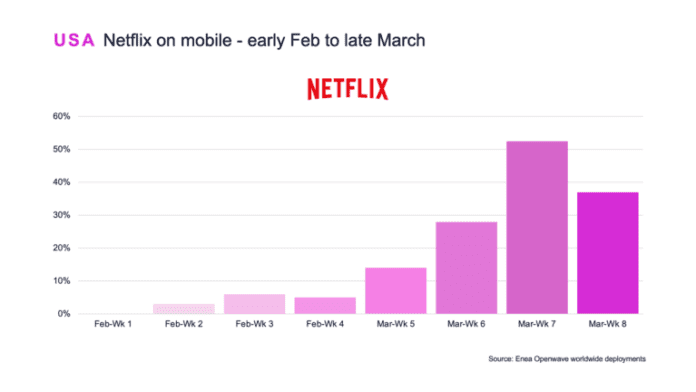If you thought the election of Donald Trump was a game-changer, or Britain’s departure from the EU was a shock, 2020 would like to have a word with you. It’s already been the most disruptive year in a generation or more, with entire nations going into lockdown as the world and business rally against the spread of COVID-19.
Who’d have thought at the beginning of the year that by March we wouldn’t be allowed to shake a colleague’s hand, give our parents a hug or even head into the office? It’s ironic in a way. Some people used to blame the “Facetime generation” for making us feel lonely and disconnected; now, it’s the only thing keeping us together. When the British parliament reconvened, instead of the usual cheers and jeers that usually echo from the chamber, many politicians are quite literally “phoning it in”. The phone has provided a valuable lifeline and the mobile operator is playing a critical role.
So, how are network operators coping with the unprecedented pressure they’re now under to keep people connected?
I recently hosted a Microcast for the Mobile Video Industry Council, inviting analysts from ABI Research and Strategy Analytics to discuss how operators are coping with the unexpected levels of demand they’re now facing. Here are some of the key highlights from that discussion.
Catering for a sharp increase in global online traffic
Operators were already facing increased demand and pressure on their networks pre-lockdown, so it isn’t hard to imagine how difficult the past month or so has been. Italy, the first European country to enforce a lockdown, saw throughput on mobile increase by up to 90% within days. One week into its lockdown, Spain had to deal with a 35% increase in mobile traffic and a 50% increase in fixed network traffic.


Telefonica’s Movistar, Orange, Vodafone, Másmóvil and Euskaltel also reported that IP network traffic had increased 40%, while mobile had increased 50% for voice and 25% for data. Thanks to the rising popularity of services like Netflix and the trend toward video calling on services like Zoom, the increase in the volume of data transfer is primarily driven by video. Amazon’s Prime Video streaming service saw a 20% spike in Italy from the pre-lockdown period to the end of March, and the number of people accessing Netflix on their mobiles shot up by 25%.
These trends were echoed across the world. Simply put, there is more video data in transit than ever before.
How are operators trying to flatten the communications curve?
The challenge network operators are facing is complex. Yes, they’re coping with an increased demand in traffic, but they must do so in a way that offers the best possible user experience and doesn’t compromise their reputation. They also need to be aware that now, more than ever, they’re delivering a public service rather than a mere product, with millions of customers depending on them to stay in touch with their families, work effectively and keep themselves occupied.
Telefonica Spain has taken this to heart, adding an additional 100GB to its mobile data plans for 2 months. AT&T in the US has waived all fees for going over data caps, and provided basic internet access to low-income households for only $10/month. The likes of T-Mobile and Sprint are providing unlimited data on all mobile plans for three months, as well as free limited mobile hotspot access. Outside of the general public, carriers in China have deployed connectivity to hospitals in record time, with the 5G rollout being tailored to benefit fixed wireless applications for medical facilities.
On the streaming front, the likes of Netflix readjusted and changed the encoding for the existing qualities to help operators balance their loads. Yet, this is not good enough to meet the needs of operators. Even with modified adaptive bit rates, video guzzles as much data as possible. To effectively manage this challenge, operators must have the technology to detect congestion on the access network, aggregation points and backhaul and respond dynamically to balance video quality. That is how operators can end the communications curve for the traffic surge. As the lockdowns were coming into place, one tier 1 operator in India started feeding the core network back with radio congestion indicators to manage the traffic spike. Created on the back of the level of congestion being observed, the operator took action in real time to balance video traffic. They delivered a consistent quality of service for subscribers and that had no impact on frontline services. Mobile operators have really stepped up.
The word “unprecedented” has been used many times and yes, neither fixed or mobile networks have been designed to handle this level of unprecedented traffic. It is great to see the industry coming together to keep subscribers and frontline staff all connected as we try to overcome these unexpected and unprecedented challenges.

